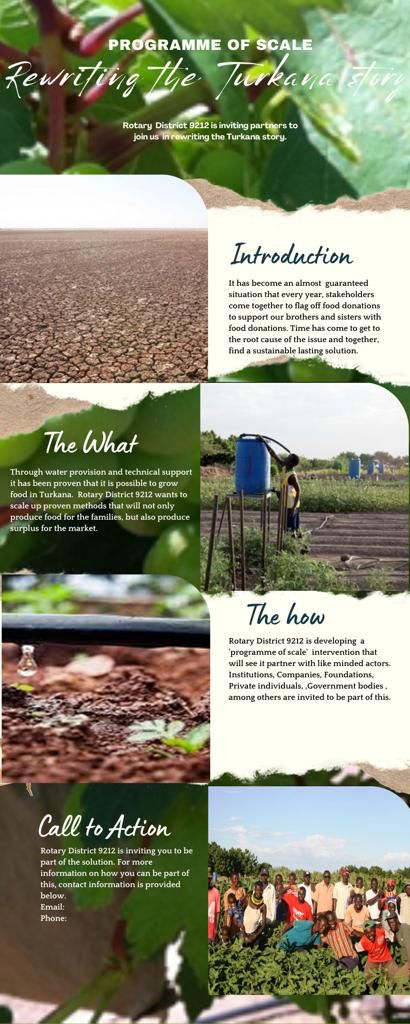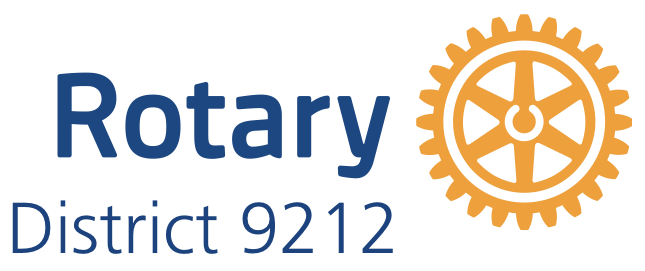TIPA Project: A Lifeline For Northwestern Kenya

By Eric Ombok
TIPA is a Hebrew word meaning drip. TIPA is also a pilot project in Turkana, northwestern Kenya.
The project is addressing drought and community economic empowerment, among other challenges. The initiative, which is hosted by the Rotary Club of Muthaiga, has been ongoing for 10 years and is now set for expansion to other arid and semi-arid counties in Kenya under Rotary District 9212’s Program of Scale initiative.
Partners in the project include Ramat Hasharon of Rotary International District D2490 in Israel as the international sponsor, the Missionary Community of Saint Paul the Apostle in Kenya and Spain, Brit Olam – International Volunteering and Development from Israel and Arava Center for Sustainable Development, also from Israel.
The main challenges facing agricultural development in Turkana are harsh environmental conditions, lack of know-how in developing agriculture in an arid area, difficulty in bringing expert agronomists and skilled manpower to the area on a long-term basis, deep cultural gap between the herders’ way of life and farming way of life, lack of transportation infrastructure and access to markets.
The project entails a gravity-fed drip-irrigation system and donation of farmers’ kits by Rotary International. Introduction of crop farming in the pastoralist community is intended to support food security in the area, provide an additional source of income and contribute to the local community’s resilience.
Additionally, it will support markets and a credit system, support a farmers’ association, support farming clusters based on central water supply system, establish a research, training and demonstration farm, train as many as eight graduates to be trainers and managers and assist the graduates in establishing their own farms and take on two assistants.
In turn, the assistants are expected to establish their own farms and recruit two assistants. The project will conduct five to six months training courses in agriculture and provide continuous training.
“TIPA will produce vegetables and fruits all year round,’’ according to the promoters of the project. “An alternative way of life that can be a means to self-sustenance and provide the community with food security.’’
Other objectives of the project are better nutrition among the local communities who rely on pastoralism and fishing. Crop farming will provide them with an additional source of income, hence poverty alleviation.
Some of the crops that have already been grown through the Tipa Project include tomatoes, watermelon, sweet melon, butternut squash, cucumber, okra, green grams, cow peas, soybeans, eggplant, green pepper and chilli pepper. There is also kales, spinach, maize for human consumption and as fodder, sorghum and moringa. Going forward, additional crops will include dates and pomegranate.
So far, the project has established a fully operating central farm, put in place 57 drip irrigation systems in phase one, 40 drip irrigation systems in phase two, 40 drip irrigation systems in phase three, while installation of 40 drip irrigation systems in phase four is ongoing.
Also, there are 57 graduates and 104 assistants in the first phase one, 40 new farmers trained and 92 assistants in phase two, 24 new farmers trained and 46 assistants in phase three and currently on the 13th training course.
Beneficiaries of the Tipa Project include 830 local families of project graduates owning family plots and enjoying improved nutrition, additional fodder and income. The graduates’ circles of relatives and neighbours are also enjoying improved nutrition and 500 families of local workers are employed in three community plantations on the banks of Lake Turkana.
Other members of the local communities are generating income for their families through secondary jobs based on marketing the farm produce, food processing, food preservation and transportation of produce to markets.
At 77,000 square kilometres, Turkana is the second largest of Kenya’s 47 counties and covers more than 13% of the country’s surface.
“This vast land in the northwest of Kenya is an awakening economic giant, for beneath its surface lie huge oil deposits that are currently being explored and will see extraction in an industrial scale during the years to come – a windfall for a county with a population of slightly over one million people’’, according to the Turkana County government.




